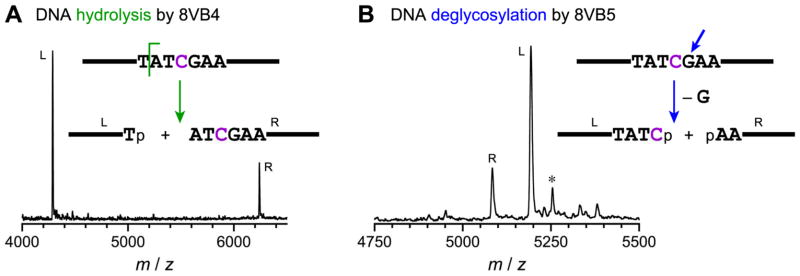Figure 4.
Representative MALDI mass spectra to assign cleavage reactions and sites for deoxyribozymes from the initial N20 and N30 selections for DNA cleavage. All mass spectra data and precise cleavage-site assignments are tabulated in Tables S1 and S2. The indicated C nucleotide of the substrate was not base-paired with either deoxyribozyme binding arm (see Figure 1). (A) 8VB4 deoxyribozyme, which hydrolyzes the DNA substrate at a specific phosphodiester linkage and forms 3′-phosphate and 5′-hydroxyl products. Some of the new DNA-hydrolyzing deoxyribozymes lead instead to 3′-hydroxyl and 5′-phosphate products. (B) 8VB5 deoxyribozyme, which deglycoyslates the DNA substrate at a specific guanosine. After two subsequent β-elimination reactions, the products are missing the entire G nucleoside and have 3′-phosphate and 5′-phosphate groups. Some of the new DNA-deglycosylating deoxyribozymes are not site-specific and deglycosylate the substrate at either of two adjacent nucleotide positions. In the spectrum of panel B, the asterisk denotes the peak for uncleaved substrate with z = 2.

